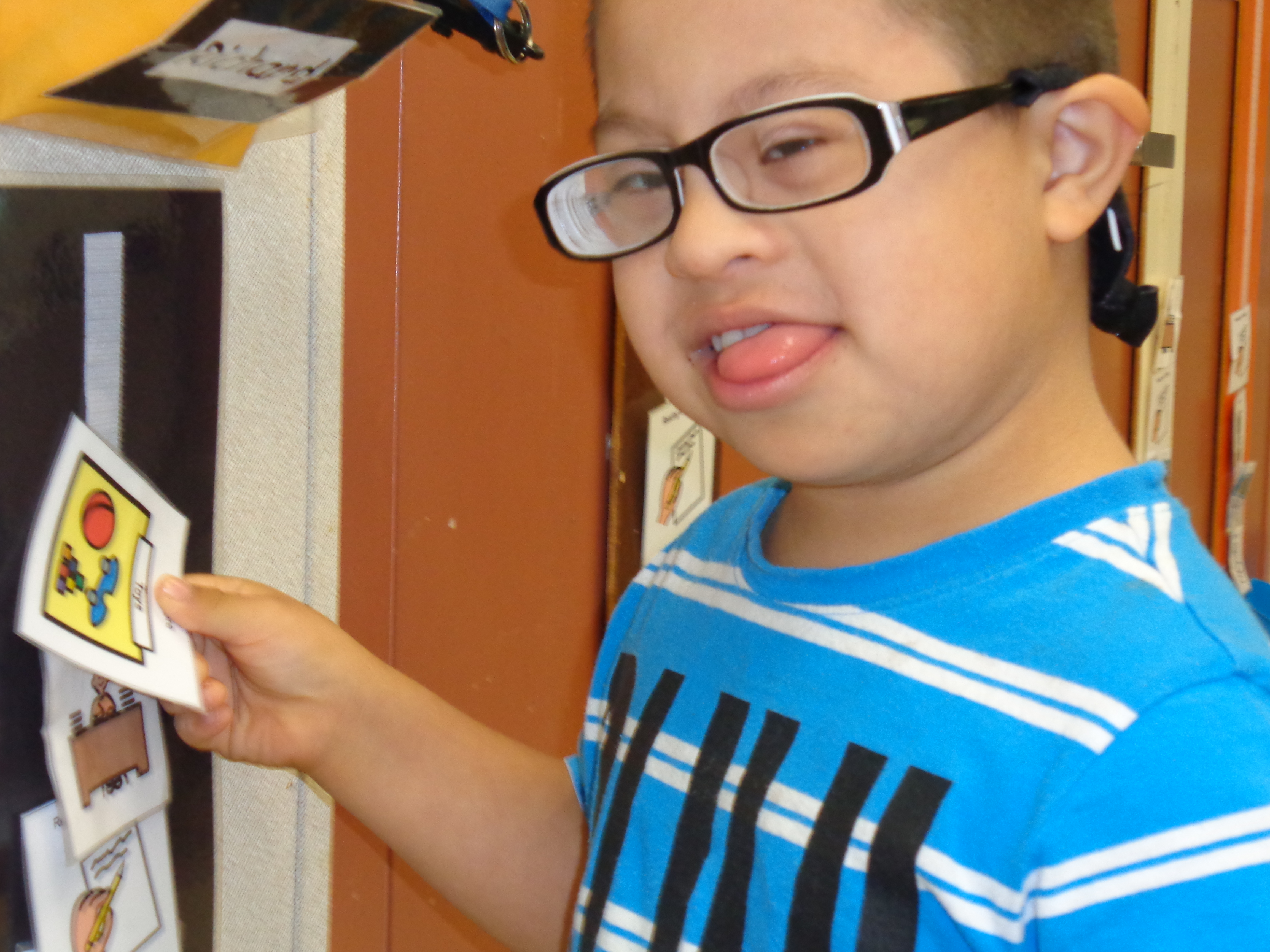The IEP process guides each student’s program within our language and behavior classes. Individual goals and objectives are collaboratively determined, and progress and outcomes are measured via instructional data collection and analysis. IEP goals are written in the following areas:
- Pre-Academic/Academic,

- Communication
- Motor Skills (fine/gross)
- Adapted/Daily Living Skills
- Social Emotional Skills
- Vocational Skills
Designated instructional services are written collaboratively between the specialist and the classroom teacher. Our program utilizes the SEACO Curriculum Guide for Students with Moderate to Severe Disabilities as a guide to implement functional skills strategies. The guide is aligned to grade level standards at various levels of implementations.
Click here to download a copy of the OCDE Special Classes for Students with the Most Significant Needs Brochure.
Classroom Design
Behavior and language classes work from the position that students have difficulty modulating their behavior due to a variety of factors including:
Therefore, providing a highly structured environment with clearly defined areas for specific activities, visual schedules, and visual communication systems presents students with predictable routines and expectations. This predictability affords students stability and confidence within the classroom and allows them to become ready for instruction and function in a more independent manner within classroom, school and community environments.
Classroom Instruction & Instructional Methodologies
Students receive instruction from the teacher, Paraeducators, and designated instructional service professionals. All instruction is planned and guided by the classroom teacher and is individualized to meet the needs of each student. Classroom activities are structured through use of a variety of groupings including:
Students apply functional reading, writing, math, communication and language skills within community and work environments, to assist in the generalization of learned skills. While interacting with community members, students also are given opportunities to generalize and apply learn
ed skills to other community and work settings.
